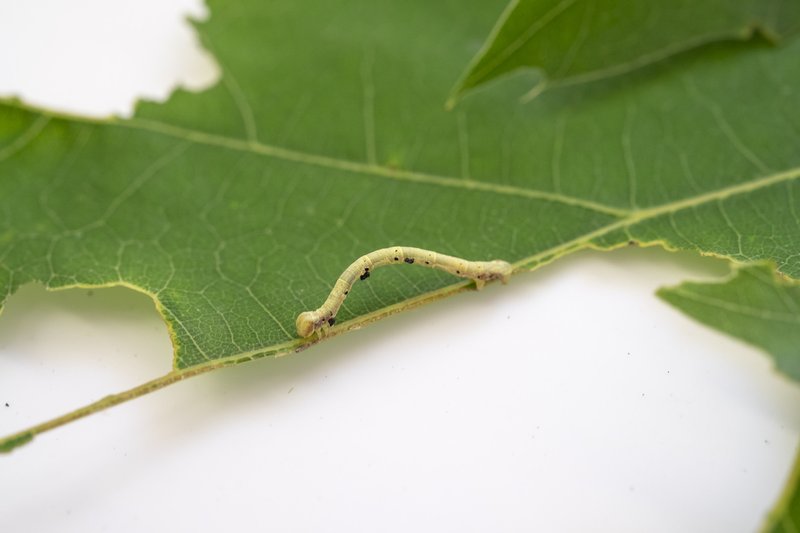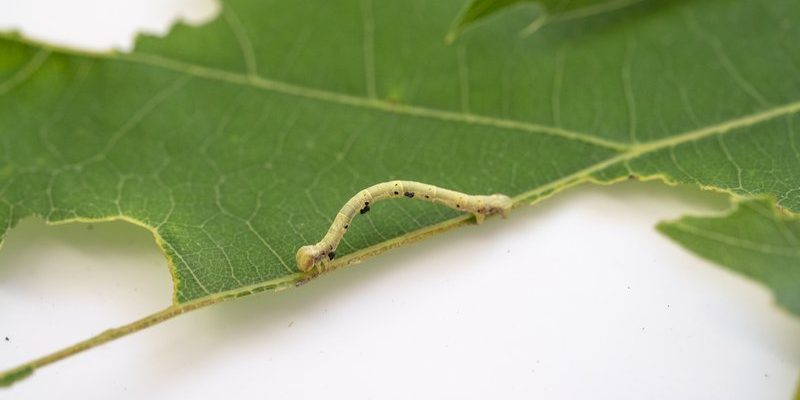
Inchworms, scientifically known as “loopers,” are the larvae of moths. They get their name from their unique way of inching along as they move, almost like they’re measuring the distance between two points. While they can be interesting to watch, a large population can strip your plants of leaves, potentially harming your garden’s overall health. Luckily, there are plenty of organic methods to keep their numbers in check. Let me walk you through a few effective strategies.
Understanding Inchworms: The Basics
Before we get into controlling inchworm populations, it’s important to understand what makes them tick. They’re usually found on trees and shrubs and can vary in color, blending in perfectly with their surroundings. Inchworms start life as eggs laid by adult moths, and before you know it, they hatch and begin their leafy feast. They’re most active in spring and early summer, so that’s when you’ll want to keep your eyes peeled.
You might be wondering how to identify an inchworm. These little guys often hang from silken threads, and if you see a caterpillar that seems to move in a looping manner, that’s likely an inchworm. They usually measure about 1 to 2 inches long. Because they can camouflage so well, it might take a keen eye to spot them among your plants.
An important aspect to remember is that inchworms can be helpful at times. They serve as food for birds and other beneficial insects, so a few of them can actually contribute to a balanced ecosystem in your garden. However, when their numbers grow out of control, action is necessary.
1. Natural Predators: Enlisting Help
One of the most effective ways to manage inchworm populations is to invite their natural predators into your garden. Birds, ladybugs, and certain types of wasps all love munching on these little guys. If you create a welcoming environment for these beneficial insects and creatures, you’ll have a better chance of maintaining a balanced ecosystem.
To attract birds, consider installing birdhouses or bird feeders filled with sunflower seeds. Planting a variety of flowers can also invite ladybugs and other helpful insects. Just like having a great team of friends to help you out, these natural predators will swoop in and keep the inchworms at bay.
Additionally, you might want to consider planting specific flowers, such as *yarrow* or *cosmos*, which provide food for ladybugs and other beneficial insects. The more diversity you have in your garden, the happier your ecosystem will be!
2. Hand-Picking: The Old-School Method
If you’re not squeamish, you can always resort to good old hand-picking. This method requires a bit of patience and diligence but can be quite effective. Just grab a pair of garden gloves and head out to your plants early in the morning or late in the afternoon when the inchworms are most active.
Look for them hiding on the undersides of leaves or dangling from threads. If you find any, simply pluck them off and relocate them to a less problematic area of your yard, or even into a compost pile where they can decompose naturally. It’s like giving them a little nudge to find their way to a new home!
Keep in mind that this method works best if you only have a few inchworms to contend with. If you’re facing a larger infestation, you might need to combine this technique with others for better results.
3. Organic Sprays: Eco-Friendly Solutions
If hand-picking feels too labor-intensive and the population keeps climbing, you might want to consider using organic sprays. These sprays are typically made from natural ingredients and are designed to deter or eliminate inchworms without harming beneficial insects.
You can create a simple homemade spray using ingredients you probably have on hand. Mix a few drops of dish soap with water in a spray bottle. When you apply this solution directly on the inchworms, it can suffocate them by clogging their breathing pores. Just make sure you spray in the evening or on a cloudy day to avoid burning your plants.
Another option is to use neem oil, which is derived from the seeds of the neem tree. It disrupts the feeding and reproductive capabilities of many pests, including inchworms. Just mix according to the instructions and apply it to affected areas of your garden.
4. Effective Barriers: Protecting Your Plants
Sometimes the best defense is a strong barrier. Physical barriers can protect your plants from inchworms without the need for chemicals. Consider covering your plants with a lightweight fabric like row cover. This creates a protective shield while still allowing sunlight and moisture to reach your plants.
Another option is to lay down diatomaceous earth around the base of your plants. This natural powder made from fossilized algae is harmless to humans and pets but can deter inchworms by damaging their exoskeletons when they crawl over it.
To install these barriers, simply lay the cloth over your plants, making sure it’s anchored down so it doesn’t blow away. For diatomaceous earth, sprinkle a thin layer around the base of your plants and reapply after rain for continued effectiveness.
5. Companion Planting: Smart Garden Allies
Companion planting is like assembling a dream team for your garden. By strategically planting certain plants next to each other, you can deter pests like inchworms and promote the health of your plants. For example, planting herbs like *basil* or *rosemary* near your vegetables can repel inchworms while simultaneously enhancing the flavor of your produce.
Another effective pairing is marigolds, which release compounds that deter a variety of garden pests. By getting creative with your planting arrangements, you can create a natural pest management plan that benefits your garden in multiple ways.
When planning your garden layout, consider grouping flowers and herbs with your vegetables. The diversity will not only keep inchworms at bay but will also attract helpful insects, adding another layer of protection to your plants.
6. Monitoring and Early Intervention
Keeping a watchful eye on your garden is crucial for managing inchworm populations. Regularly inspect your plants for early signs of infestation—such as holes in leaves or the presence of silk threads. The sooner you catch an inchworm problem, the easier it will be to manage.
You can also set up simple traps, like placing sticky tape around the base of your plants. This can help catch any inchworms trying to climb up to munch on your leaves. Monitoring your plants consistently allows you to take action before these creatures can wreak havoc on your garden.
Remember, a little diligence goes a long way. By staying aware of what’s happening in your garden, you’re giving yourself the best chance to maintain a healthy balance.
Putting It All Together
You might feel a bit overwhelmed by the idea of controlling inchworm populations, but remember, it doesn’t have to be complicated. By using a combination of methods—like attracting natural predators, hand-picking, using organic sprays, and implementing barriers—you can create an eco-friendly approach that works for you and your plants.
It’s all about finding what works best in your specific garden environment. Every garden is different, and the best way to learn what will help is to experiment and observe. Over time, you’ll find the balance that allows your garden to flourish without unwelcome guests.
So, the next time you see an inchworm inching along, you’ll know just what to do. Let’s keep those gardens healthy and beautiful, one organic method at a time!

